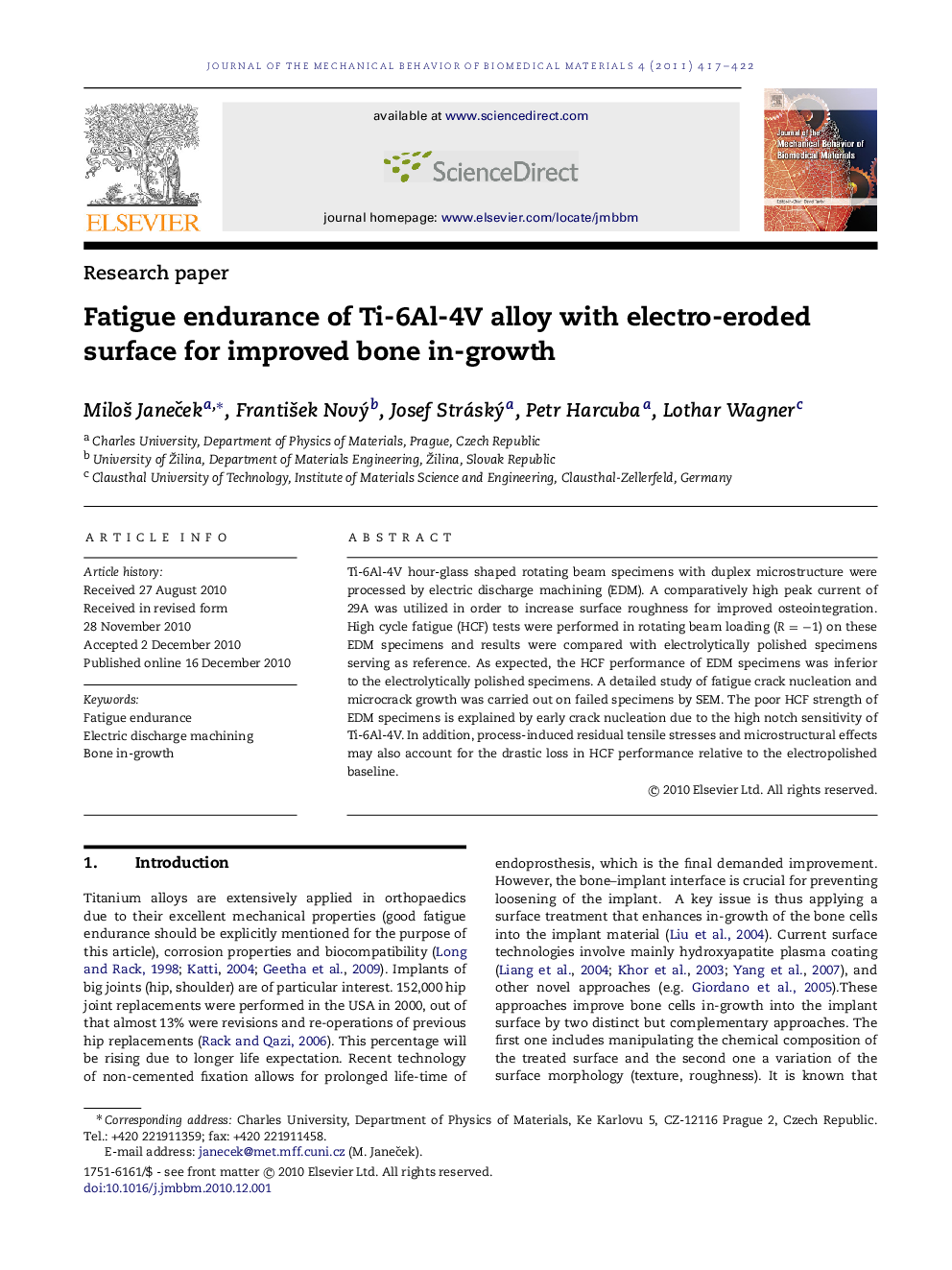| Article ID | Journal | Published Year | Pages | File Type |
|---|---|---|---|---|
| 811448 | Journal of the Mechanical Behavior of Biomedical Materials | 2011 | 6 Pages |
Ti-6Al-4V hour-glass shaped rotating beam specimens with duplex microstructure were processed by electric discharge machining (EDM). A comparatively high peak current of 29A was utilized in order to increase surface roughness for improved osteointegration. High cycle fatigue (HCF) tests were performed in rotating beam loading (R=−1R=−1) on these EDM specimens and results were compared with electrolytically polished specimens serving as reference. As expected, the HCF performance of EDM specimens was inferior to the electrolytically polished specimens. A detailed study of fatigue crack nucleation and microcrack growth was carried out on failed specimens by SEM. The poor HCF strength of EDM specimens is explained by early crack nucleation due to the high notch sensitivity of Ti-6Al-4V. In addition, process-induced residual tensile stresses and microstructural effects may also account for the drastic loss in HCF performance relative to the electropolished baseline.
Research highlights► Ti-6Al-4V alloy with bimodal structure processed by electric discharge machining. ► EDM process with high peak current of (29 A) imposed surface roughness. ► Methods: high cycle fatigue (HCF) in rotating bending, scanning electron microscopy. ► HCF tests: relatively poor high cycle fatigue performance of EDM specimens. ► SEM: early crack nucleation due to notch sensitivity and microcracks from EDM.
